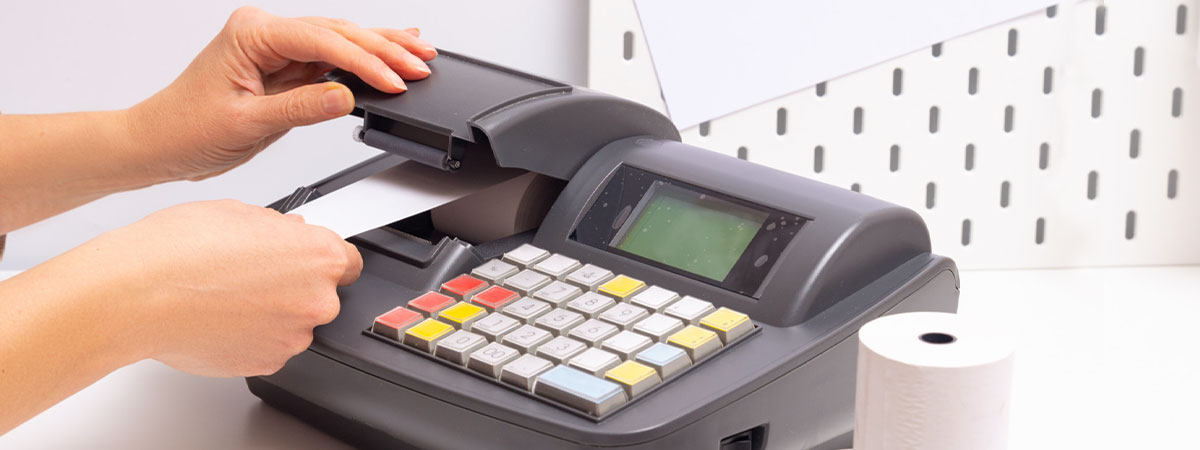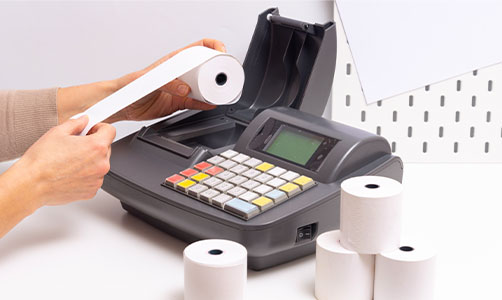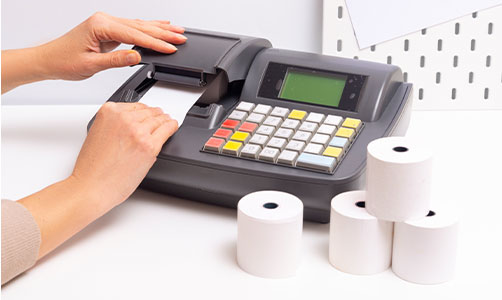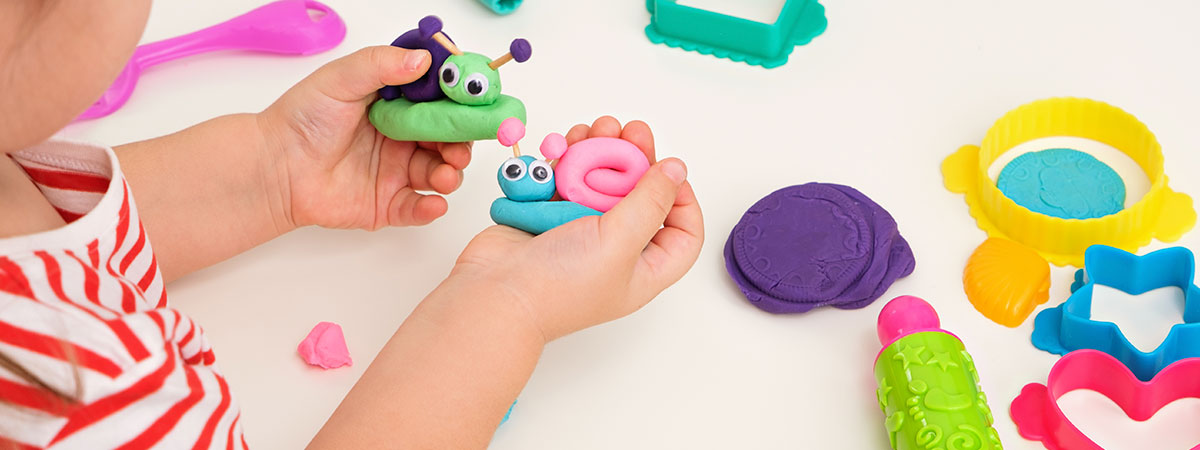- Promotions
How to change a roll on a cash register?

Changing the roll of a cash register is a routine but important task that ensures the continuous operational process of any commercial activity. In this blog we will look at the steps to properly replace the cash register roll, as well as some techniques and tips to keep the machines in optimal condition.
Table of Contents
1. How to prepare the cash register for a roll change?
2. What are the basic steps for changing a cash register roll?
3. Maintenance tips and common problems
How to prepare the cash register for a roll change?
Before starting to change the roll, it is important to prepare as follows:
- Ensure your safety and disconnect the cash register from the mains.
- Prepare the required size of consumable that is compatible with your device.
- Ensure a clean and tidy work surface to avoid damaging the new roll or the apparatus itself.
What are the basic steps for changing a cash register roll?
You can do this easily and quickly by following these instructions:
- Open the compartment where the cash register roll is placed. This is usually done by pressing a button or sliding the cover.
- Remove the used roll. Be sure to also remove the remnants of the old paper, if there are any.
- Install the new supply and make sure the paper is facing the print head correctly and that the free edge is coming out in the direction specified by the manufacturer.

- Fasten the roll and close the lid. Make sure you close it well to avoid a paper jam.

- Turned on the cash register and did a test print.
Maintenance tips and common problems
Maintenance is not limited to just replacing the old with a new consumable. Here are some tips to optimize device performance:
- Regular cleaning – keeps the print head free of dust, ink and dirt that can affect print quality.
- Use quality consumables – avoid low-quality paper that can leave residue and damage the print head.
- Place the cash register in a dry place - moisture can damage the electronics and cause malfunctions.
Changing a cash register roll is an important step in maintaining the efficiency and reliability of your business operations. Following the above steps and tips will help you manage this task with ease and avoid common mistakes. Professional maintenance and regular replacement of consumables are key to avoiding operational problems and maintaining a high level of customer service.






